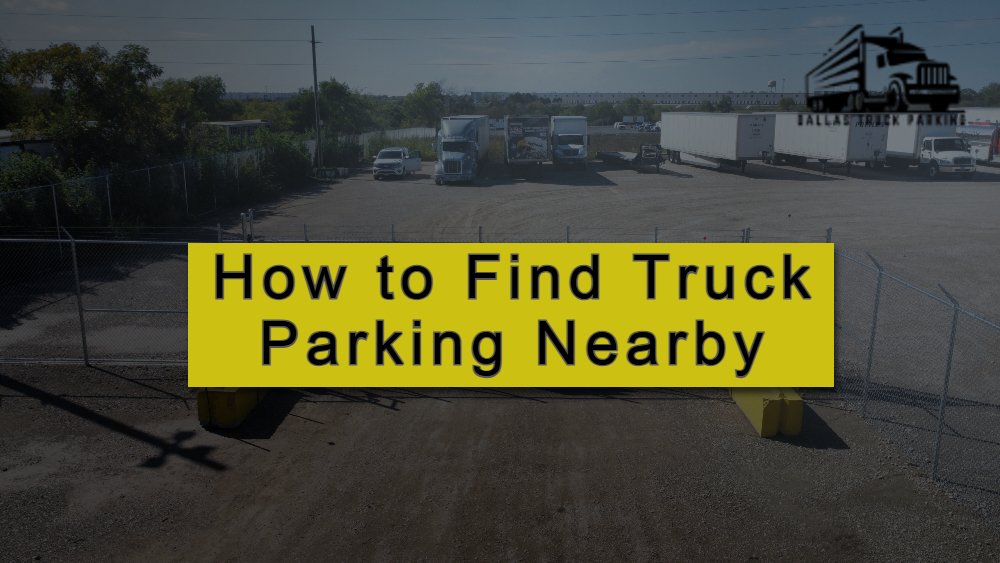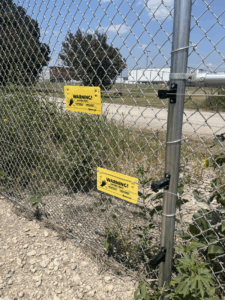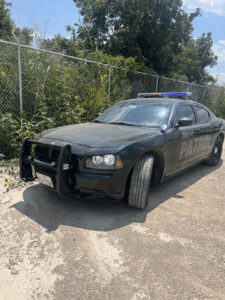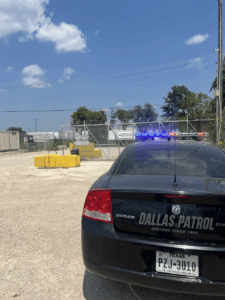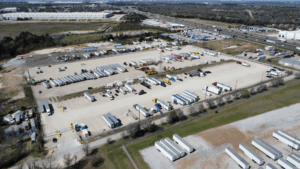If you drive for a living, finding truck parking isn’t optional; it’s part of your daily routine. It affects your route, your sleep, your safety, and your ability to stay compliant with Hours of Service (HOS) rules. Yet, it’s one of the most frustrating parts of the job. You could plan your day down to the mile, but when your time runs out and you can’t find a safe place to park, everything falls apart.
This guide walks you through how to actually find nearby truck parking, what to expect from paid vs. free options, and how to make sure the spot you choose is legal, safe, and reliable.
Why Truck Parking Is Hard to Find
There are more trucks on the road than there are legal, accessible parking spots to support them. This isn’t just a supply-demand problem; it’s also a policy and planning issue.
1. Too Many Trucks, Not Enough Spots
The number of freight vehicles on the road has grown, but parking infrastructure hasn’t kept up. Most rest areas and truck stops hit capacity early in the evening.
2. Limited City and Metro-Area Access
Many urban areas ban overnight truck parking or don’t allow large vehicles in some zones. This forces drivers to look for other options outside city limits, adding miles and wasted time.
3. Strict Hours of Service (HOS) Limits:
Drivers are required by law to stop once their driving hours are up, with no grace period. If there’s no parking nearby when your clock runs out, you’re stuck between breaking the law and risking unsafe parking.
4. Inadequate Public Infrastructure
State-funded rest areas usually have fewer than 20 truck parking spots. Some states have even closed rest areas entirely to cut costs, making things worse.
5. Private Lots Filling Too Fast
Even paid truck stops like TA, Love’s, and Pilot fill quickly. Without a reservation or early arrival, you may not get a spot, even if you’re willing to pay.
6. Safety and Theft Risks in Informal Areas
Parking on the side of a road, behind a retail store, or in a dark industrial zone might be your only option, but it comes with risks. Cargo theft, vandalism, and fines are common.
Related: How to Find a Place to Park Your Truck and Trailer
How to Find Truck Parking Nearby
Finding nearby parking for trucks isn’t just about convenience; it’s a part of the job you need to get right. Parking spots fill up fast, especially near major delivery hubs or along busy freight corridors. The best way to stay ahead is to combine planning with tools that give you real-time updates. Here’s what actually works on the road:
1. Use Truck-Specific Parking Apps, and Websites
Apps like Trucker Path, TruckMap, Park My Truck, and Truck Parking Club, and websites like Dallas Truck Parking show real-time parking availability, user reviews, and filters for size, cost, and facilities. Many drivers depend on these daily to find parking before their hours run out.
2. Plan Your Stop Before You Start Driving
The easiest way to avoid parking stress is to plan ahead. When you’re building your route, think about the parking areas around your HOS limit, especially near delivery points or major highways. Don’t leave it for the last hour of your shift.
3. Use GPS Units Made for Truckers
Normal navigation apps don’t cut it. Truck GPS devices (like Garmin Dezl or Rand McNally) are built with truck routes, rest stops, weigh stations, and parking data baked in. They also help you avoid low bridges and wrong turns.
4. Reserve Paid Spots in Advance If Needed
Some truck stops now let you reserve parking ahead of time, through their own apps or third-party platforms. If you’re running late or expecting heavy traffic, locking in a paid spot can give you peace of mind.
5. Check for Bog Box Stores or Industrial Zones (With Permission)
Some Walmarts, Home Depots, or warehouse lots can also allow overnight parking. But this changes depending on the location. It’s always best to call ahead or ask in person. Don’t assume that it’s allowed without confirmation.
6. Ask Other Drivers or Dispatch for Local Tips
Other drivers are usually the best source of information. Ask around at fuel stops or on Facebook groups, or on forums. Chances are someone’s parked in that area before and knows where it’s safe or risky.
7. Use Backup Locations
If you’re heading into a busy corridor (like I-95 or near a major port), check out at least two or three potential parking spots beforehand. Always have backups ready in case your first choice is full.
Related: How to Store My Truck: Safe, Spacious & Convenient Parking Solutions
Paid vs Free Truck Parking Options
Truck parking has two options: free and paid. Both have their own advantages and disadvantages. Most drivers mix them up based on where they are, what time it is, and how much flexibility they have.
Free Parking:
Free options mostly include public rest areas, truck stop lots (like Love’s or Pilot), some big box stores, and open roadside pull-offs. These spots fill up fast, especially after 5 or 6 p.m., and are not always safe. Some locations have limited lighting, no facilities, or local rules that restrict overnight parking.
Paid Parking:
Paid parking gives you a reserved spot, usually with better lighting, access control, and on-site facilities. Truck stops now also provide reservation systems through their own apps or partners. Private truck parking businesses and yard-sharing platforms (like Truck Parking Club) also let you book ahead. Rates change, anywhere from $10 to $35 per night, depending on location.
What You’re Paying For:
With paid parking, you’re often paying for peace of mind, especially if you’re on a tight schedule. The spot will still be there even if you arrive late. Many paid lots also include 24/7 access, security cameras, gated entry, and restrooms or showers.
When to Choose One Over the Other:
If you’re ahead of schedule and near rural areas, free parking will work just fine. But in urban or high-traffic areas, or if you’re driving late into the evening, paying for a reserved spot would be your safest option.
Related: Truck Parking Lots vs. Truck Stops: Which is Better for Long-Term Parking?
When to Look for Parking
The timing of when you start looking for parking makes a huge difference. Most of the truck stops and rest areas fill up by early evening, especially on busy corridors or near major delivery zones. So, if you wait for too long, your chances of finding a safe, legal spot become low.
Start Looking Before Your HOS Runs Low
Don’t push it to the last hour of your shift. If you start hunting for a spot with only 30-60 minutes left, you may end up having to settle for a risky or non-compliant location. Plan to stop earlier, ideally before peak parking hours hit.
Best Window: 3 p.m. to 6 p.m.
Most drivers aim to shut down between 5 and 7 p.m., which means lots start filling up around 3:30 or 4 p.m. The earlier you arrive, the more likely you are to find an open, safe spot.
Avoid Searching During High-Traffic Delivery Times
Evening rush hour, late-night industrial traffic, and early morning dock schedules can all mess with parking availability. Try to land your parking spot before or after these pressure windows.
Factor in Metro Areas and High-Demand Routes
If your route ends near a large city or near ports, expect competition. You’ll want to plan your day so you’re not arriving in these zones too late. Always have a backup location mapped out.
Adjust Based on Day of the Week
Mondays and Fridays are usually the busiest. Midweek might give you a bit more breathing room, but it still depends on your route and region.
Related: How to Book 18-Wheeler Parking Spaces for Rent in Dallas
What to Look for in a Safe Parking Spot
Not all parking spots are good. Just because a space is open doesn’t mean it’s a good place to stop. Safety, security, and other things matter. Especially if you’re staying overnight or leaving your load unattended. These are the basics to check before you shut down:
1. Good Lighting and Visibility
A well-lit lot prevents theft, break-ins, and vandalism. It also helps you see your surroundings clearly if you need to move around after dark.
2. Surveillance or On-Site Presence
Some paid lots and truck stops have cameras or security patrols. That kind of security makes a real difference when you’re parking in unfamiliar areas.
3. Legal Status of the Space
If the lot has signage prohibiting truck parking, don’t risk it. Local law enforcement and property managers are quick to ticket, boot, or tow rigs parked illegally, especially in metro areas or business lots.
4. Level Ground and Manoeuvring Room
You need a spot that’s stable, flat, and gives you space to back in safely. Avoid narrow shoulders, ditches, or sloped ground where your truck can roll or sink.
5. Access to Facilities (If Needed)
Depending on how long you’re parked, it helps to have entry to a restroom, food, or a place to stretch out. Truck stops and paid parking often have these, but remote lots or street parking won’t.
6. Avoid Blind Corners or Tight Exists
Try not to park where you’ll be boxed in or forced into a risky turn when leaving. If other trucks can block you in during the night, that’s a problem waiting to happen.
Related: Why Truck Drivers Are Struggling to Find Parking Lots & How to Solve It
Final Thoughts
Truck parking isn’t just a side task; it’s part of the job that needs just as much planning as your route or delivery schedule. With limited spots, tight HOS limits, and waiting till the last minute isn’t the best anymore. Apps, paid reservations, and backup plans all help, but the key is to stay ahead of the curve.
Take out the time to carefully choose your options. Know where the safe spots are, understand when they fill up, and be willing to pay for security because they matter. It’s not always easy, but with the right tools and habits, finding truck parking nearby becomes a whole lot more manageable.
